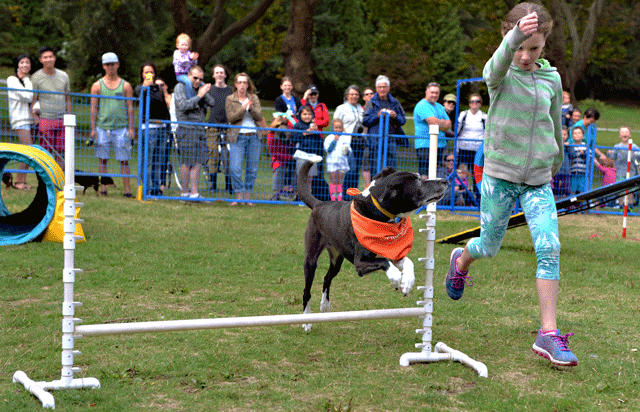|
 Have a dog in your life? Take some extra time this spring break to help them learn a new trick! You will need: Have a dog in your life? Take some extra time this spring break to help them learn a new trick! You will need:
• A bar, such as a broom handle.
• Some blocks to adjust the bar height.
• Treats or your dog’s favourite toy.
Agility requires some patient training. Follow these steps:
1. Start with your dog on a leash facing a very low bar – about 10 cm high.
2. Lead your dog over the bar using the “jump” command. As they cross, toss a treat in front of them as a reward.
3. While they are on leash, practice jogging up to the bar several times with your dog. Each time, call “jump” and toss a treat or toy in front of them. This teaches that good things happen when they jump. Plus, the forward movement prepares them for the next obstacle.
4. Once they get it with the leash, try to do the same steps without the leash.
5. Increase the height by a small amount. Continue to practice before raising the bar. You could also set up another jump a few metres ahead and have them jump twice.
Don’t be frustrated if your dog isn’t a “jumper” or loses interest. Dogs also like short training sessions – 10 to 15 minutes is about right. Keep practice sessions fun and soon they will look forward to the next agility obstacle!
|